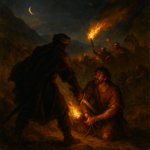
Loyalty Despite Separation
When Abram heard that his kinsman had been taken captive, he mustered his trained men… and went in pursuit. (Genesis 14:14) Abraham just separated from

When Abram heard that his kinsman had been taken captive, he mustered his trained men… and went in pursuit. (Genesis 14:14) Abraham just separated from
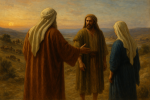
And the Lord said to Avram, after Lot had separated from him… “I will make your seed like the dust of the earth.” (Genesis 13:14–16)

VeZot HaBerachah and the Hoshana Rabbah custom of striking the ground with willow twigs tl;dr Incense (ketoret) means “binding,” which we interpret as entanglement; the
By Alexander Poltorak לע”נ אבי מורי, אברהם שמשון ע”ה בן ראובן Between the jubilation of Rosh HaShanah and the solemnity of Yom Kippur lie ten
The ten days between Rosh HaShanah and Yom Kippur are called Aseret Yemei Teshuvah (Ten Days of Penitence). As the prophet says: Seek G-d while

This essay explores a novel parallel between quantum mechanical principles and the biblical creation narrative through etymological analysis of the Hebrew terms “erev” (evening) and
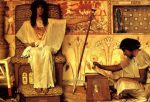
And afterwards she bore a daughter, and called her name Dinah. (Genesis 30:21) In my previous essay, “The Conflict Between Joseph And His Brothers—A Gender
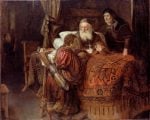
And Rebekah spoke unto Jacob, her son, saying: “Behold, I heard thy father speak unto Esau thy brother, saying: Bring me venison, and make me

And Abraham took another wife, and her name was Keturah (Genesis 25:1) As I discussed in the earlier essay, “Yom Kippur – Disentangling the
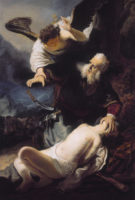
And He said: “Take now thy son, thine only son, whom thou lovest, even Isaac, and get thee into the land of Moriah; and offer

In the beginning, G‑d created the heaven and the earth…[1] (Genesis 1:1) Classical biblical commentators have given the first words of the Torah many

And the Lord spoke unto Moses, saying: ‘Command the children of Israel, and say unto them: When ye come into the land of Canaan, this

And all the tithe of the herd or the flock, whatsoever passeth under the rod, the tenth shall be holy unto the Lord.” (Leviticus 27:32)

And whosoever lieth carnally with a woman, that is a bondmaid, designated for a man, and not at all redeemed, nor was freedom given her;
In my post, “Ye Shall be Disentangled,” I suggested that the verse: “Ye shall be holy, for I, the Lord, your G‑d, am holy” (Levit.
Welcome to the premiere of our first film, Quantum Torah. You can watch the film here: Don’t forget to subscribe to my channel here:

I am excited to announce that the premiere of our film “Quantum Torah” is scheduled for this Friday, March 1st. You can see the trailer
Coming soon to a theater near you. Watch a trailer:
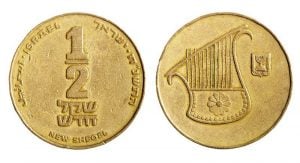
This they shall give, everyone who goes through the counting: half a shekel according to the holy shekel. Twenty gerahs equal one shekel; half of

At the end of the weekly portion, Tetzaveh, the Torah speaks of the burnt offerings (Heb. qorbanot) and the incense offerings (Heb. qetoret). The Lubavitcher

And thou shalt make two cherubim of gold; of beaten work shalt thou make them, at the two ends of the ark-cover. And make one

According to the Saadia Gaon, these two Torah portions – Nitzavim and Vayelech – are really one portion, which sometimes is split into two. In the
In my last year’s post “Balak – Interference of Souls,” I suggested that Balak needed Balaam (Bilam) to cause constructive interference to make the curse

The blessings and the admonitions of Bechukotai (Leviticus 26:3–27:34) are viewed as the result of entanglement and disentanglement with G‑d respectively.
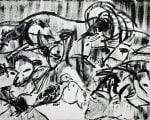
And he took him all these, and divided them in the midst, and laid each half over against the other… And it came to pass, that,
When G‑d created the first humans, Adam and Eve (Chavah), He created them as one. And G‑d created man in His own image, in the
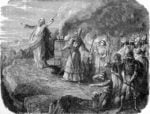
Balak the son of Zippor saw all that Israel had done to the Amorites. Moab became terrified of the people, for they were numerous, and
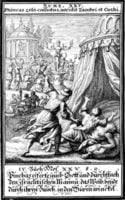
A strange episode at the end of the last Torah portion, Balak, where Phinehas (Pinchas) slain a Jewish prince caught in the act with a
…And they prophesied in the camp. (Num. 11:27) In the Torah portion Behaalotecha, there is an interesting narrative: And the Lord said unto Moses: ‘Gather
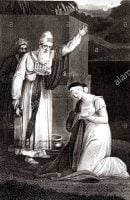
The story of Sotah, a suspected adulteress, is very troubling on the first blush. Why would a woman be subjected to such humiliation? The Lubavitcher
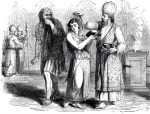
In quantum mechanics, the state of a physical system is described by the so-called wave function (or the “wavefunction”). All attempts by Schrödinger, who first
Ye shall be holy, for I, the Lord, your G‑d, am holy. Leviticus 19:2 This Torah portion begins with an astonishing statement: Speak unto all

Today is Rosh Chodesh Adar Bet – the New Moon and the beginning of the second month of Adar. If we ever to have a month
Reading the Haftorah this Shabbat brought to mind scenes from the 2004 Republican National Convention in Madison Square Garden in New York City where attendees where
Do you like riddles? Here is a riddle – what do these two figures represent in the context of Exodus? No Idea? How about

The story of entangled twins is continuing in the Torah portion Vayeitzei (Genesis 28:10–32:3.) Structurally, it is very similar to the story in the previous Torah
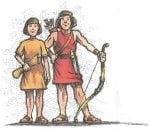
Entanglement is often called the most baffling and quintessential phenomenon in quantum mechanics. What is entanglement, in a nutshell? Two particles born from one reaction
By the mouth of two witnesses, or three witnesses, shall the one liable to death be put to death; he shall not be put to
Pinchas You shall apportion the Land among these as an inheritance, in accordance with the number of names. To the large [tribe] you shall give a

Speak to the children of Israel and have them take for you a perfectly red unblemished cow, upon which no yoke was laid… The cow

Koraḥ the son of Yitzhar, the son of Kehos, the son of Levi took [himself to one side] along with Dasan and Aviram, the sons
Vaikra-Leviticus 14:35-36 (Metzora) 35. and the one to whom the house belongs comes and tells the kohen, saying, “Something like a plague has appeared to
B’reshit bara Elokim et hashamaim v’et haaretz… In the beginning, G‑d created heaven and earth… Alternative translation: With two beginnings G‑d created heaven and earth…
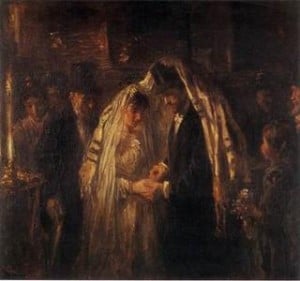
A story is told about a bachur (an unmarried young man) who came in the 60s to the Lubavitcher Rebbe for the yechidus (private audience)

And he shall take the two he goats, and place them before the Lord at the entrance to the Tent of Meeting. And Aaron shall

In the Torah portion Tazriah (Leviticus 13), the Schrödinger cat[1] gets leprosy. Well, it’s not really leprosy, it’s a mysterious supernatural disease called tzara’as, nowadays translated